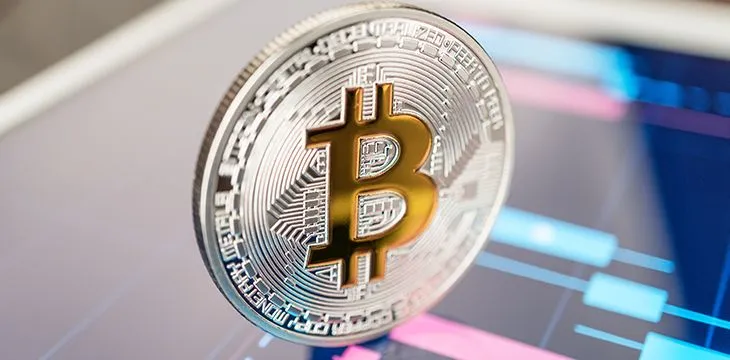|
Getting your Trinity Audio player ready...
|
Bitcoin SV (BSV) proponents proudly defend the economic model in the Satoshi Vision of Bitcoin and in the whitepaper itself as the superior way to run a worldwide immutable blockchain. This economic reasoning from within the BSV world may sometimes—for various reasons—not easily convince outsiders. However, the Satoshi Vision now gets an advocate of the finest kind.
George Gilder, the widely known writer and highly respected economist, makes a comprehensible case for BSV and the Satoshi Vision—without mentioning Bitcoin at all.
In his book “Knowledge and Power,“ Gilder states:
It takes a low-entropy carrier (no surprises) to bear high-entropy information (full of surprisal).
This may sound scientific and complicated, but it really is not. In a recent interview recorded for Youtube by the Hoover Institution, Gilder makes this insight easier to understand:
In order to carry (…) a surprising creative signal, you need a predictable carrier.
Where is the connection to Bitcoin? Wait and see. Let’s simplify this even further: To be creative, you need a stable foundation.
In the interview, Gilder discusses the idea of an economy with a set of governmental circumstances—tax policies, regulations, legal regime, property rights—as a “predictable carrier“ for innovations, investments and growth. Whenever governmental circumstances change surprisingly fast or surprisingly often (worst case scenario: both), growth decreases and businesses withdraw potentials. Gilder explains:
What you want in economy is predictable laws, predictable political leadership, a spirit of trust which means a contract can be predictable. Property rights, which means that property rights don’t change from time to time. That entrepreneurs can launch their creation through a world that’s governed by predictable rules of law (…).
Exactly the same thought works for blockchains. You want a blockchain protocol as a “predictable carrier“ in order to enable a stable foundation to build onto.
A blockchain itself can be a “low-entropy carrier,“ being able to “bear high-entropy information.“ This is possible only if the underlying protocol is stable. Otherwise, it is not a “predictable carrier“ in the words of George Gilder, therefore not able to carry a surprising creative signal.
These surprising creative signals can be anything on the blockchain or anything that uses the blockchain. For example, applications. We have already witnessed the cambrian explosion of services on the Bitcoin (BSV) network with apps like Twetch, WeatherSV, Peergame, Weiblock and many more.
This is exactly what Gilder is talking about, even though he was not referring to blockchain or cryptocurrencies at all. Once you establish a stable ground layer, a stable carrier, a stable blockchain protocol, anyone feels secure enough to build something onto it.
And Gilder digs even deeper. Still discussing information and economy in general, he says:
Influence from the channel to the content is called noise. And you want to have as little noise as possible.
So whenever the channel, or let us say carrier, influences the signal, it is called noise. That is a distortion. Translated to the blockchain cosmos it means that any developer change of the protocol will affect the content created on the blockchain. Protocol changes create noise, distortion, insecurity and push away businesses as businesses seek stability and predictability of circumstances.
One could already experience this “noise“ in the BTC realm.
The BTC camp has a kind of schizophrenic relationship with the idea of a stable protocol. On the one hand, they limit the blocksize to a dead stable 1MB and vehemently defend this restriction. On the other hand, they alter the meaning of the whitepaper and the definition of Bitcoin as a chain of digital signatures by implementing segregated witness technology (SegWit), which morphed BTC into something that is not Bitcoin at all (because with SegWit there is no chain of digital signatures anymore). Recently it has even been discussed inside the BTC circles to raise the number of total BTC supply in order to create a different rate of BTC inflation. This would be just another uneducated approach in economic terms to the stability of a protocol, or as Gilder puts it: “noise.“
Mindblowing is how Gilder points out the emergence of these most needed “predictable carriers“ or stable protocols in society and history:
I don’t believe that these rules (…), the Constitution, the trustworthy political leadership, contracts, courts that are reliable, that all these ‘low-entropy carriers‘ can emerge spontanously. I think it takes heroic George Washington and Jefferson and Madison, all these great men to achieve the ‘low-entropy carriers‘ that allowed the efflorescence of the American economy (…).
How did Bitcoin with its frozen protocol emerge? Right. Through the exhausting and never seen before hash war of 2018. That was how the “low-entropy carrier“ BSV as the most “predictable carrier“ ever in blockchain existence was born. Through battle and hardship in an unprescedented historic event, just like Gilder explains the emergence of all “low-entropy carriers“ in general. We heard this years ago from the Bitcoin creator himself:
The nature of Bitcoin is such that once version 0.1 was released, the core design was set in stone for the rest of its lifetime. (Satoshi Nakamoto)
This is why. Set the protocol in stone for the rest of its lifetime in order to make possible a cambrian explosion of creativity. The set in stone protocol is the “low-entropy carrier,“ it is the “predictable carrier“ as Gilder articulates it. A stable foundation anyone can build onto forever. No “noise“ at all.
Satoshi Nakamoto foresaw it, George Gilder confirms it.
Watch George Gilder’s interview with the Hoover Institution:

 08-19-2025
08-19-2025 





